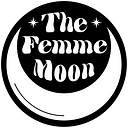For Love of the Femme Fatale
Like a cat, the femme fatale decides when she wants to play. If you cross her, scratched you very well may become. Precisely packaged as a film and TV trope, though existing in lore as far back as the biblical Eve and Lilith and the medieval Morgan le Fay, B-movies from the slick fantasy legend of Lair of the White Worm to political wife Claire Underwood have made this character a focus. She exists as both an independent woman and the crux of men, arriving in differing yet recognizable guises. Hitchcock’s “Icy Blondes”, Nicole Kidman’s sociopath Barbie housewife in Gus Van Sant’s To Die For, Sharon Stone in most everything. Teen femme fatale, a category of its own: Poison Ivy, Lolita, Crush, Cruel Intentions. I was drawn to redheads as a wee Girl Scout, specifically toon sexpot Jessica Rabbit, perhaps an extension of forever femme fatale Rita Hayworth. Dorothy Dandridge was the best reincarnation of opera’s famed character of fatale-kind, Carmen Jones. Isabella Rossellini’s Lynchian characters (a femme fatale in each tale), plus her supporting role as immortal glam-max in Death Becomes Her, slay.
For the classy vamp especially (talons perhaps even donned with Chanel Vamp), wardrobe is part of the armor, smoldering eyes as warpaint, her charm cloaked in mystery. The original film femme fatales, Anna Wong and Theda Bara, internationally branded the picturesque aspect of this persona during the daring fashion revolution of the flapper. 1940’s noir films formed her fully with the sharpness of suits, dangerous heels, fabulous hats, lips red as blood. Bettie Page’s all-black underthings was another silhouette of unbridled sexual femme fatality, complete with shiny leather boots. A combination of the 1940’s pressed powerhouse and slightly S&M lingerie was later contextualized by controversial photographer Helmut Newton and designers Thierry Mugler and Alexander McQueen. There is no femme fatale fashion code but cutting glamour tends to accompany her stance.
Often with a dark past, perhaps trauma, abuse or just a massive chip on her shoulder, the femme fatale is aware of the cruelty in this world. In a way, she is an anarchist. She doesn’t ask for forgiveness, even after writhing wretched words, words that wound like wolves, howling from a darkest pit of woe she will never let anyone know. Wolves, Ice Age survivors, often wander in packs but they’re also known to skulk through forests alone, relying on territorial pissings to travel in the midst of a society that has no use for them. Maybe the femme fatale wants respect, the space to thrive or simply base level equality, all without having to dumb down what men call her “womanly wiles”. The fury that she cherishes is also that which the world hates so much within her. Like the wolf, the femme fatale fights for her own in a world that finds her to be a threat, trying her hardest to grab an angle in a kingdom that wants no allegiance.
Flirting with danger, portrayed too often from view of the male gaze, the Femme Fatale eyes a loophole out of an oubuliette, always somehow still a Damsel-in-Distress. Even where this duality is dressed wanton and ready, she is cagey, holding cards close. The Femme Fatale lavishes in the role, entangled to save herself, or waiting for someone else to save her, if only (t)he(y) could see her true self. Between the lines it is read: fear follows, desperation like invisible daggers against a skintight dress. Lurking in the shadows, she pretends she is not there at all, hoping to vanish…
Yet, there is courage, too, for without it, there is no story.
The juxtaposition for the women in the Noir genre allows depiction of grim realism and psychic + physical violence, flaunting men’s capitalization of women as objects… sexual, labored… and yet for the “hero”, women are objectified, too, often romantically, to provide love, light, loyalty. The relation of femmes to men (and what role she serves) is a grotesque commentary on a woman’s context in industry, the home, ownership. The gauzy hopes to which these characters cling, to be seen, safe, are familiar. Any decent Noir film contains these complexities with a yearn for freedom. Even if she’s crafted in relation to a man’s journey, serving the plot as a derailment, counterpart to a crime, an escape or a renewal in Love itself, she’s life-altering.
The analytical interest that is the Femme Fatale and the Damsel-in-Distress are often two sides of the same coin.
The persona of the Femme Fatale and Damsel-in-Distress have been prime in the works of David Lynch, exemplified thru the music of Julee Cruise and Chromatics. The creation of robot women as political assassins and/or victims of technology alike, prominent as early as Fritz Lang’s Metropolis (1927), are revisited in the romantic Noir of Godard’s Alphaville (1965) and furthermore into the Sci-fi masterpiece of Blade Runner (1982), added a new aesthetical quality and complexity to the trope. Our NEON NOIR MuseMix showcases the moods and motifs of Noir soundtracks, painting the music of the smoky chanteuse, pacing mysteries, plot anxieties, strained seductions, and tragedy through the electro-edge of 1980’s inspired works. French New Wave as a gloss to the sound, rewinding into the dark-laced synth pop that walks in rhythm with a “futuristic” future-past archetype feels compelling for the cold fronts oncoming. Queue minimal wave music and beyond, we dance in drama club cadence, ushering in leather weather: SPOTIFY LINK
